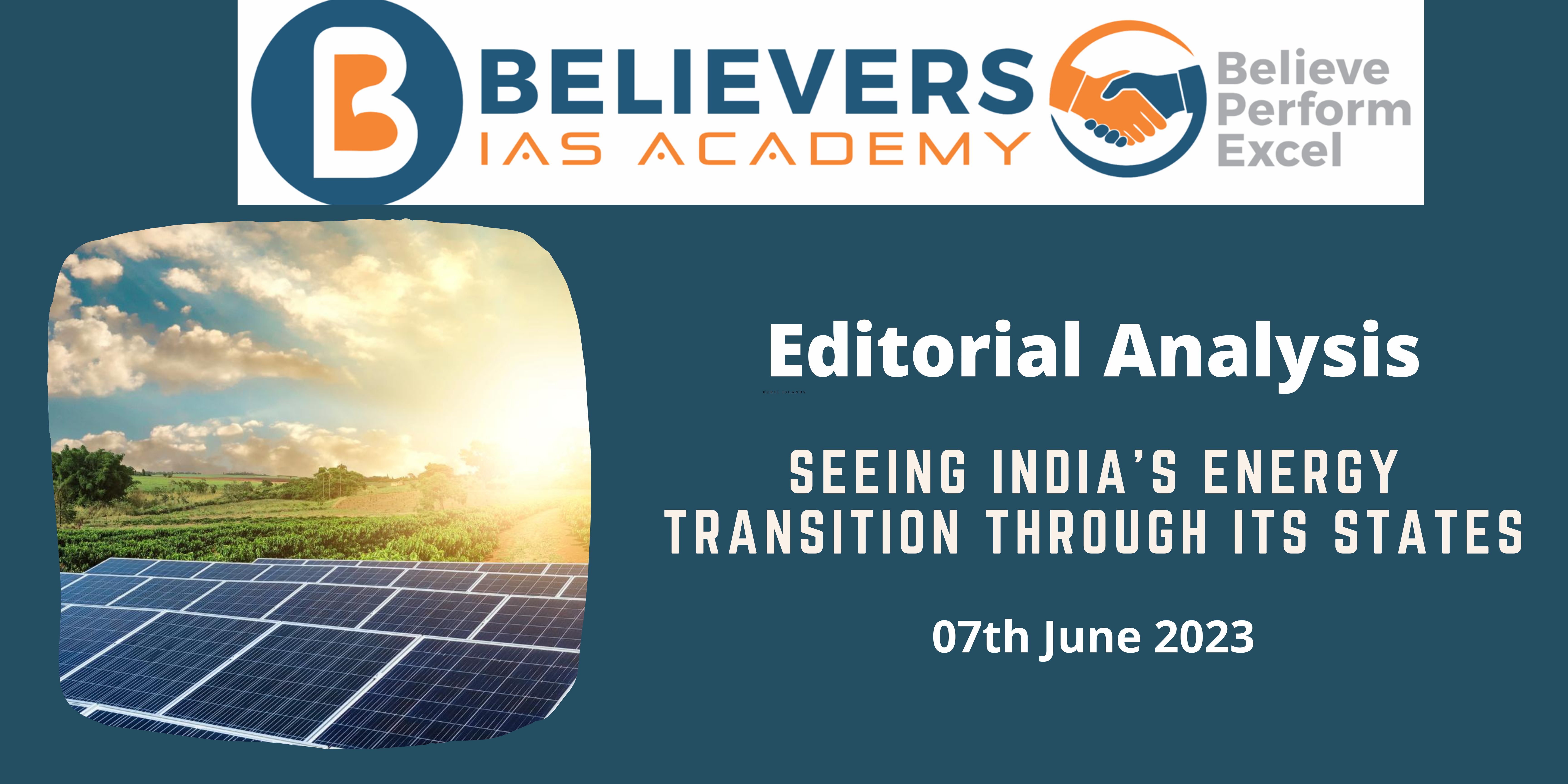Seeing India’s Energy Transition Through Its States
Context:
India intends to advocate for several energy pathways at the upcoming G20 summit to take into account the various national circumstances and development paths. India’s domestic energy transformation will be determined by the diversity of its States, which calls for numerous approaches.
Points to Ponder:
States as Implementation Spheres:
- States play a crucial role in achieving the country’s energy goals.
- The degree to which national objectives complement state priorities and resources determines their success.
- While the federal government offers assistance, state governments must implement policies effectively.
Addressing Legacy Issues:
- India’s power industry has issues like high losses, erratic supply, and service calibre.
- Since these problems are ingrained in the political economy of the State, state-level solutions are required.
- During the energy transition, ignoring these legacy problems could make them worse.
States as Policy Laboratories:
- By implementing novel policies, a few States have been at the forefront of India’s energy revolution.
- Examples include the solar energy programmes in Gujarat and Rajasthan as well as the wind energy programmes in Maharashtra and Tamil Nadu.
- The adoption of renewable energy on a national scale has been considerably aided by these effective State trials.
Potential Obstacles: 
- If states believe that national interests are not aligned with their own, they may put up barriers to achieving those goals.
- To ensure seamless progress towards national energy targets, it is essential to interact with States and address their concerns.
Multi-Scalar Planning:
- Multi-scalar planning and execution methodologies are necessary for a successful energy transition.
- The ability of State-level targets to contribute to the achievement of national goals must be evaluated.
- Important things to think about include managing load mobility allowed by renewable energy and preparing for shifting institutional roles.
- Consideration should be given to legacy issues and the distribution of resources to resolve consequences at the State level.
State-Level Framework:
- To comprehend State-specific plans, initiatives, and governance procedures, a State-level framework is required.
- This framework should cover the processes that shape those outcomes in addition to talks that are outcome-focused.
- The main components of this approach are increased transparency, stakeholder involvement, and evidence-based policy selections.
- Practical and expedited energy transformation can result from an understanding of State-level diversities in priorities, capabilities, and possibilities.




